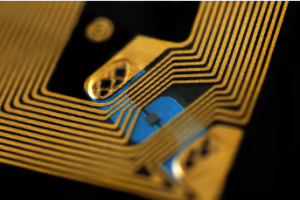RFID asset tracking has the power to simplify your business processes and help you cut costs. For example, it can help you reduce the time spent on inventory management and minimize the number of people you need to hire to complete the task. Ultimately, you can save money, increase productivity, and enhance your company’s image.
Active vs passive RFID tags
 The choice between active vs passive RFID tags for asset tracking will depend on the types of assets being tracked, as well as the application of the technology. For example, passive tags are used for monitoring small items, while active tags are more suited for tracking more significant objects. For professional RFID asset tracking services, check out https://ramprfid.com/solutions/rfid-asset-tracking/ now.
The choice between active vs passive RFID tags for asset tracking will depend on the types of assets being tracked, as well as the application of the technology. For example, passive tags are used for monitoring small items, while active tags are more suited for tracking more significant objects. For professional RFID asset tracking services, check out https://ramprfid.com/solutions/rfid-asset-tracking/ now.
Passive tags use battery power to generate signals. They are usually inexpensive and can last up to 20 years. However, they can be expensive for companies that track large quantities of items. Active tags, on the other hand, are much more durable.
Active RFID tags are a little more complex than passive tags. Additional features like onboard sensors help monitor temperature and moisture levels. In addition, they are often enclosed in a durable shell.
Active tags offer the most extended read range. These tags can send data over a range of up to 100 meters. It is advantageous in many applications, such as locating containers or vehicles.
Integrates with sensors and GPS technology
RFID asset tracking is a solution that provides real-time data on assets. It can be used in a variety of industries. In addition to providing accurate and secure information, it can also save time and reduce human involvement.
An RFID system comprises a tag containing digital data and an antenna. The reader uses the antenna to decode the information in the title. Once the tags are scanned, the data can be transmitted to a computer system. This technology can be integrated with sensors to provide more information about the asset.
Another popular technology for asset tracking is GPS. This technology can be used for local or global monitoring. Again, depending on the location and type of asset, different technology may be the best fit. For professional RFID asset tracking services, check out https://ramprfid.com/solutions/rfid-asset-tracking/ now.
However, GPS has some significant disadvantages. First, it can be expensive and requires a lot of power, and second, it doesn’t work in tiny areas. For example, it can’t work in urban settings.
Identify ROI opportunities before implementing.
A solid understanding of ROI opportunities before implementing RFID asset tracking is key to developing an effective strategy. Aside from knowing which assets need to be tracked, you need to be able to measure the effect that the solution will have on your business. Whether you’re looking to improve inventory accuracy or labour efficiency, there are ways to achieve positive results.
For example, if you want to increase the time your inventory is in-stock, consider a system that can provide real-time visibility. It will help you identify trouble spots and streamline production processes.
If you’re unsure of the return on investment for an RFID solution, it’s essential to discuss it with an industry consultant. They can help you understand the benefits of the technology and provide guidance on how to deploy it best.
When choosing a solution, it’s also crucial to consider the technology’s scalability. In other words, you don’t want to invest much money into the system immediately only to discover that the system isn’t scalable.
For companies with physical assets, RFID asset tracking can help improve their operations’ efficiency. It provides a comprehensive view of the asset fleet and helps to reduce the risks of lost or stolen items. Using RFID technology, your employees can quickly identify and track assets. It saves valuable time, reduces room for error and improves asset security.
The most significant advantage of using an RFID asset tracking system is the real-time monitoring and locating of assets. For example, with the proper RFID tags and readers, you can easily track equipment such as cars and trucks. When you are searching for an RFID asset tracking system, make sure to ask questions and look at the options in the market. There are several different types of products, each with its advantages.
Unlike traditional barcode labelling, which requires your employees to physically locate and scan a tag, RFID equipment can be wirelessly connected to a network. Once the RFID tags are detected, the data is sent to a computer that updates the database.